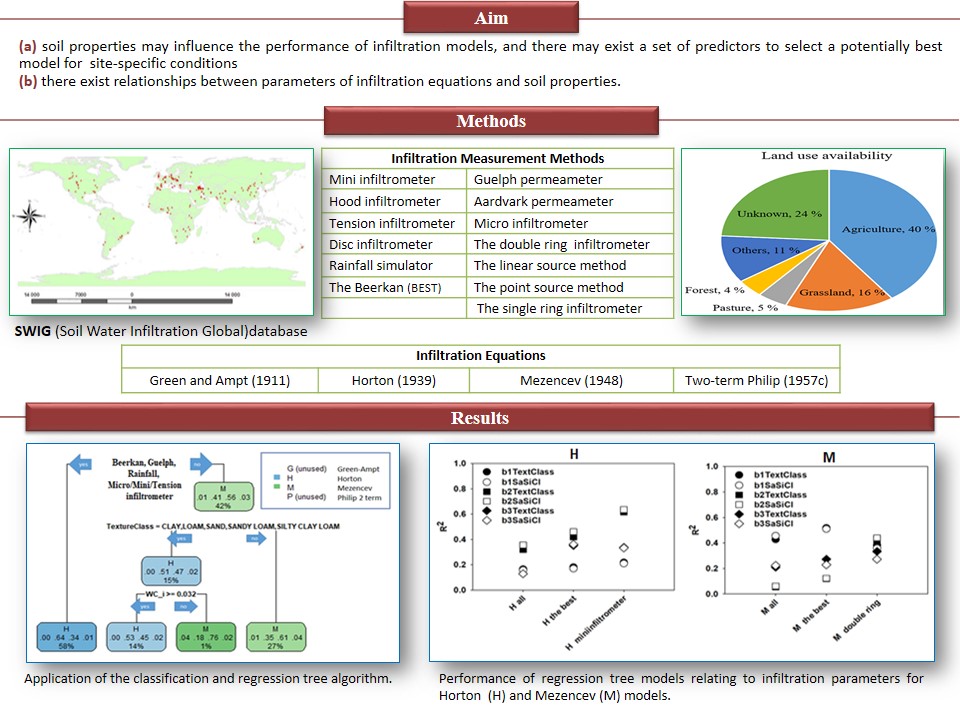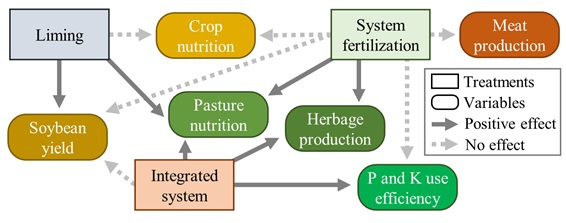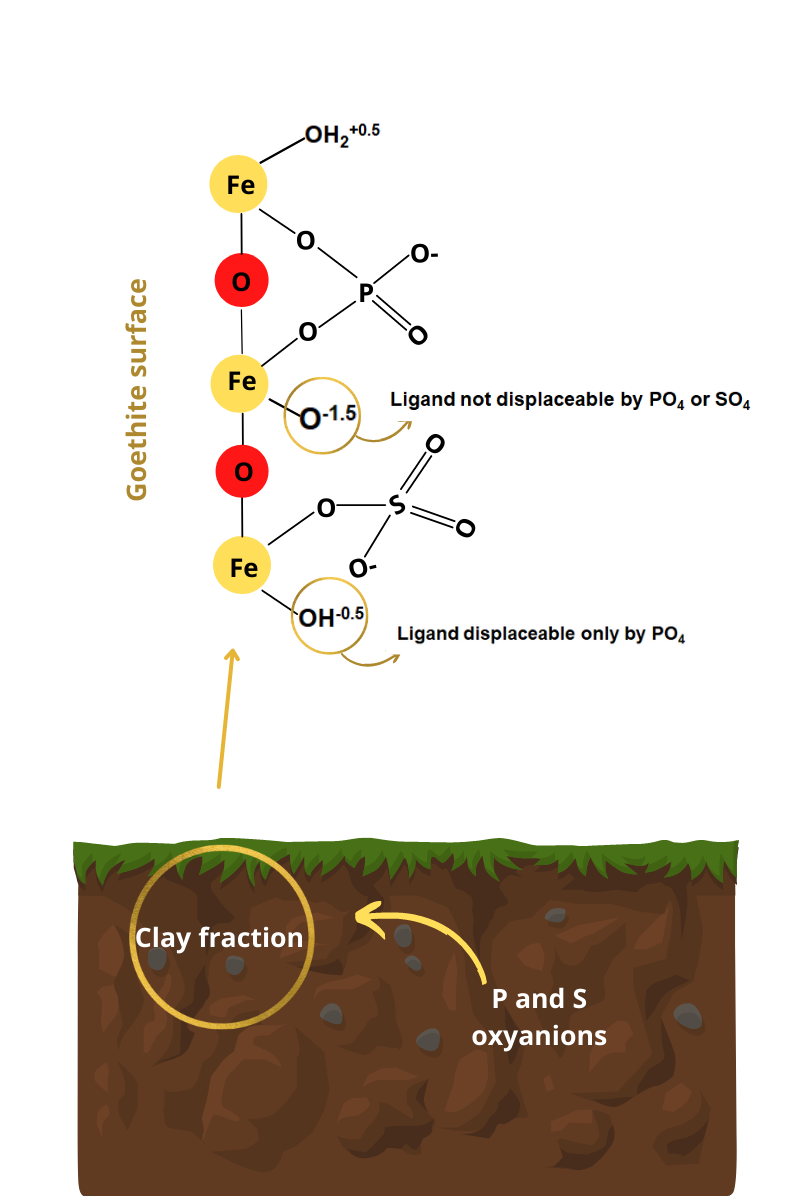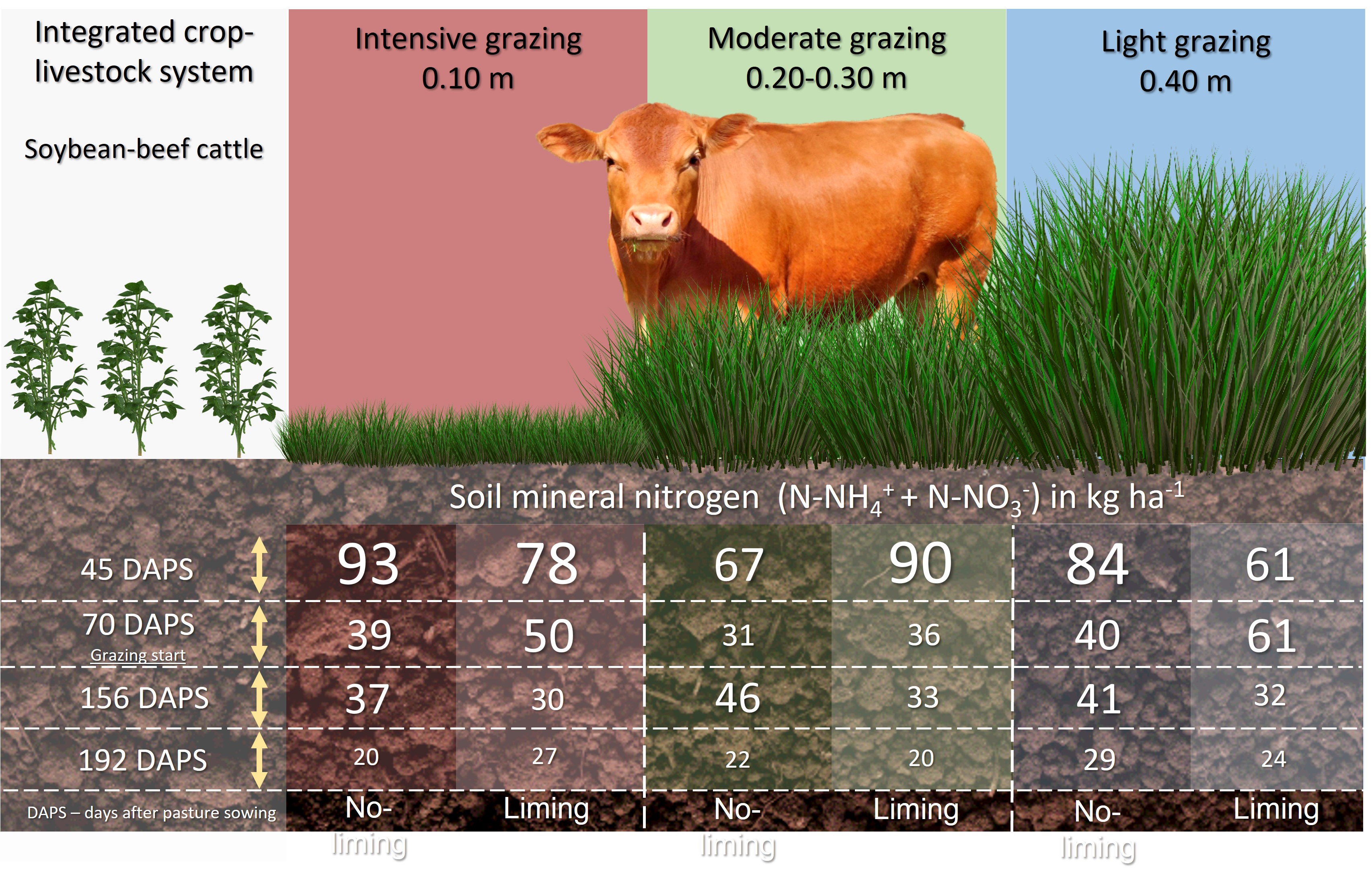Different managements in conventional sugarcane reform in sandy soils: effects on physical properties and soil organic carbon
07/Jun/2022
ABSTRACT Sugarcane culture in Brazil has expanded the planting area to degraded pastures and sandy soils. Sugarcane field reform is carried out after five or more harvest cycles, with conventional tillage, followed by planting sugarcane, or growing soybeans or a cover crop. This study aimed to analyze the effects of these different managements in the conventional sugarcane reform on the physical properties and organic carbon in an Argissolo Vermelho distrófico arênico (sandy Ultisol), located at latitude 21° 13’ 40” south, […]
Land-use affecting organic carbon and its active components in soil aggregates in China
01/Jun/2022
ABSTRACT Due to large-scale wetland reclamation, the typical wetland had been conversed to different wetland use types (upland field, paddy field, and artificial forest) in the Sanjiang Plain. However, there are scarce data regarding soil aggregates and active organic carbons during land-use transition. Here, soil aggregates and the changes in content and storage of active organic carbon [total organic carbon (TOC), dissolved organic carbon (DOC), microbial biomass carbon (MBC), and readily oxidized carbon (ROC)] were studied under three land-uses reclaiming […]
Parameters of infiltration models affected by the infiltration measurement technique and land-use
01/Jun/2022
ABSTRACT The measurement method (MM) and the land-use (LU) are two soil structure-related attributes that are available in infiltration experiments. This study aims to hypothesize that measurement technique and land-use might be good predictors of the performance of infiltration parameter values and models. The Soil Water Infiltration Global (SWIG), which includes about 5000 experiments worldwide and assembled in the Institute of Agrosphere in Jülich, Germany, was used. Except for the known properties such as texture, measurement method, and land-use, changes […]
Fertilization strategies and liming in no-till integrated crop–livestock systems: effects on phosphorus and potassium use efficiency
31/May/2022
ABSTRACT In an integrated crop-livestock system (ICLS), system fertilization exploits the nutrient cycling imposed by animal grazing and increases the system efficiency. An increasingly popular approach to fertilization in southern Brazil is anticipating P and K requirements for soybeans into the pasture phase. This can increase the use efficiency of these nutrients in ICLS based on meat production in winter and soybean in summer. This study aimed to evaluate the effect of fertilization strategy, grazing and soil acidity correction on […]
Heavy metals and pesticides in soils under different land-use patterns in neotropical high Andean Páramos
25/Apr/2022
ABSTRACT Páramos are unique strategic ecosystems in the neotropical region, above the upper limit of closed forest and below the lower limit of perpetual snow in the tropical mountains of Central and South America. Their soils are of particular importance for water regulation and carbon storage; however, thousands of peasants develop agricultural activities such as potato cultivation and livestock farming in these areas. This research aimed to evaluate the possible heavy metals contents (arsenic, cadmium, mercury, and lead) and pesticide […]
Microbial rhizosphere communities in response to chlorimuron-ethyl herbicide in soils under alfafa crop
25/Apr/2022
ABSTRACT Biolog Eco technology was used to investigate the effects of different chemical herbicide application methods, such as pre-emergence after sowing and post-emergence (stem and leaf spraying), on the characteristics of carbon source utilization by microbial communities in alfalfa rhizosphere soil. The averages of well color development (AWCD) and microbial metabolism diversity indices of post-emergence herbicide spraying on stems and leaves were significantly lower than those of pre-emergence herbicide and without herbicide treatments. Furthermore, pre-emergence after sowing herbicide treatment did […]
Soil management practices adopted by farmers and how they perceive conservation agriculture
14/Apr/2022
ABSTRACT In some rural properties of Brazil, soil and water conservation practices are partially or inappropriately implemented, intensifying soil erosion, even in no-tillage (NT) areas. This study aimed to check the farmer’s understanding of conservation agriculture (CA) and assess whether they are using practices appropriate to soil conservation. A basin in the state of Paraná, in Southern Brazil, was selected. Surveys were conducted based on a structured questionnaire and in-person interviews of 234 farmers. Among these farmers, 67 % do […]
Model of inner-sphere adsorption of oxyanions in goethite – Why is phosphate adsorption more significant than that of sulfate?
07/Apr/2022
ABSTRACT Phosphorus availability in soils is low due to its strong retention by inner-sphere complexation on minerals in the clay fraction with pH-dependent charges, such as goethite. On the other hand, sulfur has greater availability because it is retained mainly by electrostatic attraction. We evaluated the intensities of the inner-sphere complexation of orthophosphate and sulfate (H2PO4-/HPO42- and SO42- – generically treated as PO4 and SO4) under different experimental conditions (pH, goethite purity, and contact times) on synthetic goethite samples to […]
Liming and grazing intensities effects on soil mineral nitrogen throughout the pasture cycle in a subtropical integrated crop-livestock system
06/Apr/2022
ABSTRACT Grazing intensity is a preponderant factor for the success of integrated crop-livestock systems (ICLS). Management of grazing intensity impacts soil organic matter (SOM) dynamics, soil reacidification process, and amount and quality of residues added to the ICLS. Consequently, the soil mineral nitrogen (N) forms may present different behavior throughout the pasture cycle, because they are directed linked to SOM and soil acidity dynamics. This study aimed to evaluate the impact of grazing intensities and liming in the temporal variation […]
Using splines in the application of the instantaneous profile method for the hydrodynamic characterization of a tropical agricultural Vertisol
06/Apr/2022
ABSTRACT An important aspect in the study and understanding of the physical phenomena involved in water movement in the soil-plant system is the need to carry out the hydrodynamic characterization (HC) of non-saturated field soils. Studies of this type have been widely developed in soils of temperate climates, but they are infrequent in the tropics, hence there is a need for further research in tropical Vertisols under field conditions. Hydrodynamic characterization consists of finding the functional relationship between soil hydraulic […]







